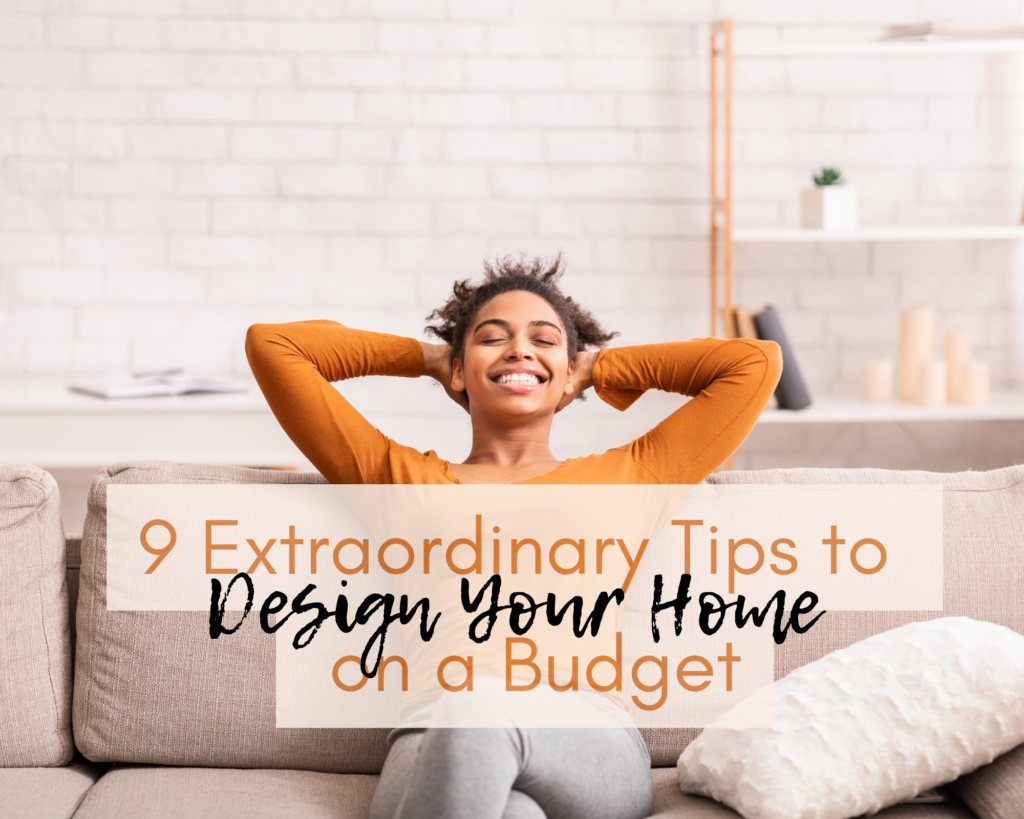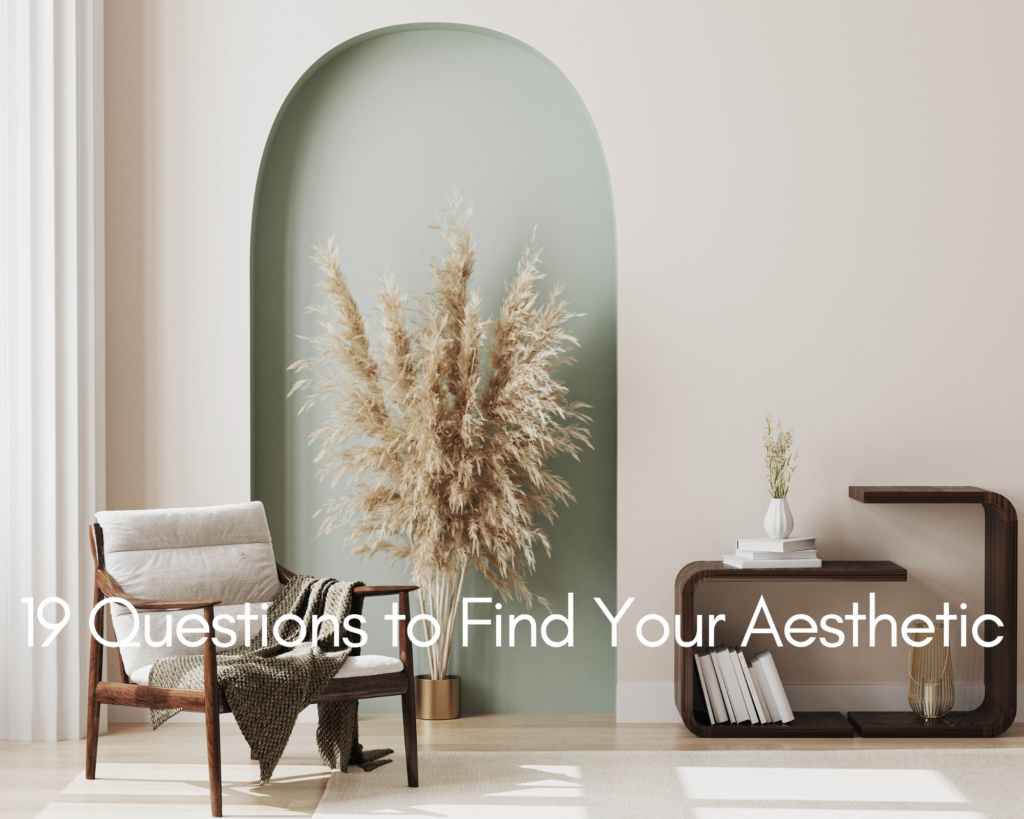Do you know the 19 most essential questions to ask to find your design aesthetic?
Figuring out your design aesthetic? No Problem! Have you ever tried to figure out how to decorate your bedroom, put together an outfit, or even style your makeup?
If so, you know firsthand how difficult it can be to settle on a style you like and to bring the vision in your head to life.
Not to worry, I have organized the list of questions and considerations I used to help me discover the interior design style that best reflected my personality and met my needs as a busy and budgeting professional.
19 questions you can ask yourself to find your design aesthetic.
Back Story
I purchased my first home in 2023 and left my full-time job 5 months later. While I had a healthy savings to hold me over, I did not land employment that paid me nearly the amount I was accustomed to making. So, I decided to pick up extra work to meet my ends and begin to rebuild my savings!
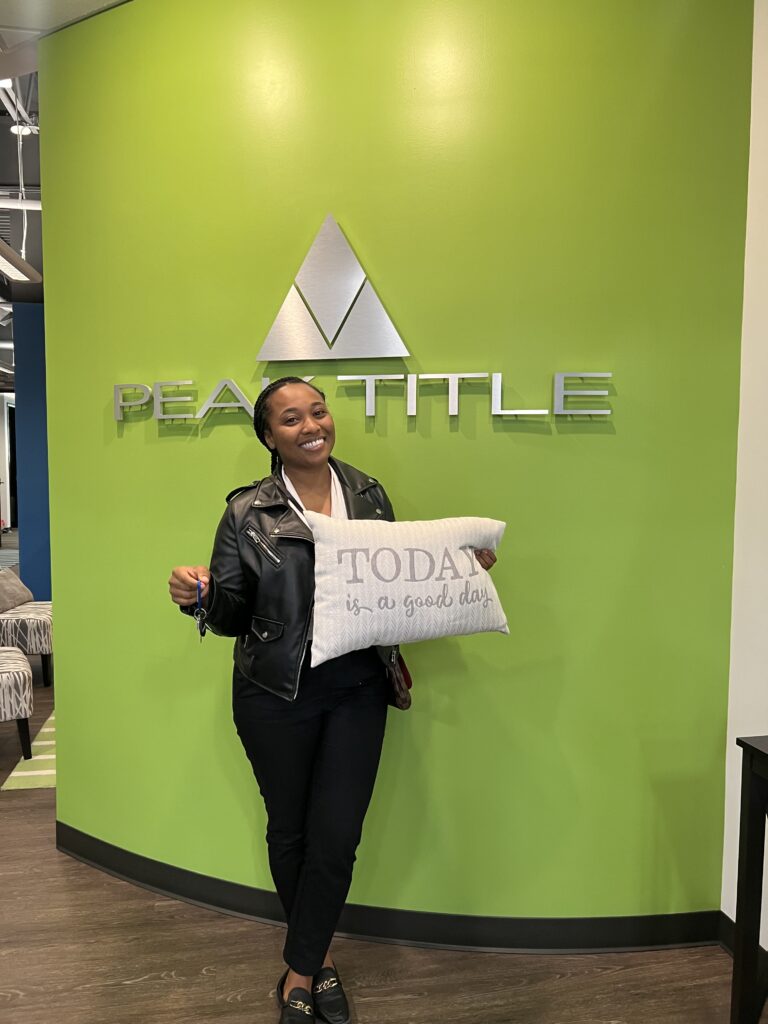
As a result, I held off on decorating my home because I didn’t have the money I thought I needed to create the space I wanted. This frustrated me tremendously. I want to enjoy this space! With a bit of elbow grease and home-grown creativity, I am excited to embark on this journey of designing the space I need and want.
That’s right—I am the head interior designer who will achieve the aesthetics of my dream city loft! My budget, time, and experience are limited, but what does that matter in the face of determination?
It was only a few days ago that I landed on a design concept that matches my personality and captures the exact aesthetic I am working to recreate. Check out these questions I explored to land on my design aesthetic for my city Loft that is stylish, functional, and sustainable.
The Best Questions to Ask to Find Your Design Aesthetic
What movies and books stand out to you?
Answering this can give you insight into the designs and moods that are most captivating to you. Think about the movies you love and the scenes that you wish you could experience. Rewatch that portion of the film and consider if there are design elements that draw you in. Consider the colors, materials, components, arrangement, and spacing displayed on the screen. The movies that influenced my interior design style are Hitch and Harry Potter. I’ve always loved bookcases, candles, gothic arches, and dark wood grains featured in academia while equally admiring the rustic, sleek brick and cement exposure of a styled industrial home.
What Pinterest pictures of home designs catch your attention?
Pinterest is a huge search engine that many bloggers, designers, and artists use to share their creativity and to be inspired by others. Searching designs and design elements on Pinterest can help you craft your vision and find details that make it achievable. I recommend creating a mood board for your home and each room you want to design. Begin to search for different designs and save the pictures to the corresponding board. Then review your mood boards and list out what resonates with you. This will help you notice colors, placements, furniture pieces, shapes, and patterns that will bring your vision to life.
What do you want to communicate about yourself and your home?
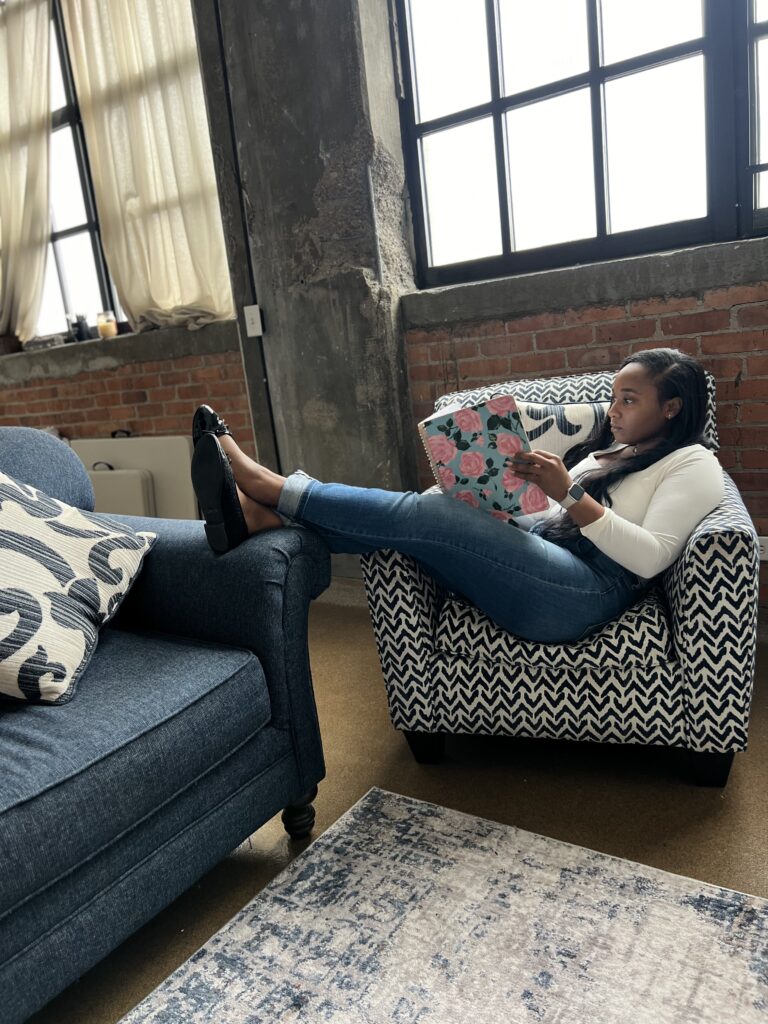
Another important thing to consider is what you want to communicate about yourself and your home. The design elements of your home are an extension of you. How might your home be an expression of your most prominent desires and deepest values? For example, I love to learn, so, displaying books on the subjects that I am most passionate about helps me to express my love for learning through interior design. What are the things that you want to express about yourself through your design?
What features and elements already exist in your home?
Identifying what features your home currently will guide you when deciding on your design aesthetic. The layout, materials, lighting, color schemes, furniture, etc. used in your home can be a map to the capacity you have to create the look you want. Take into consideration the features your home already has and lean into what is already available.
{Related Post: Why Loft Living is an Absolute Yes!}
How much money do you have to spend on this project?
Understanding your budget will give you an idea of the capacity you have to create the aesthetic you want, or how you want to approach achieving your desired aesthetic. If you have an unlimited budget you can hire someone to design and install your interior for you. With budget constraints, you still can choose whatever design you want, however, your budget will help you to decide how you will go about achieving your interior design.
What is your personal style?
Identifying your personal style can also help you to find the design aesthetic that resonates with you. Your personal style is an expression of who you are and what you like. Examining your personal style is a great way to reflect upon the aesthetics you feel most comfortable and confident in. This will give you insight into how you want to experience your home and the elements of your personal styles you’d like to include in your interior design. For me, I love to wear neutral colors and I desire a similar palette for my home’s interior because neutral colors make me feel calm, put together, and elegant.
How will I use my space/ home?
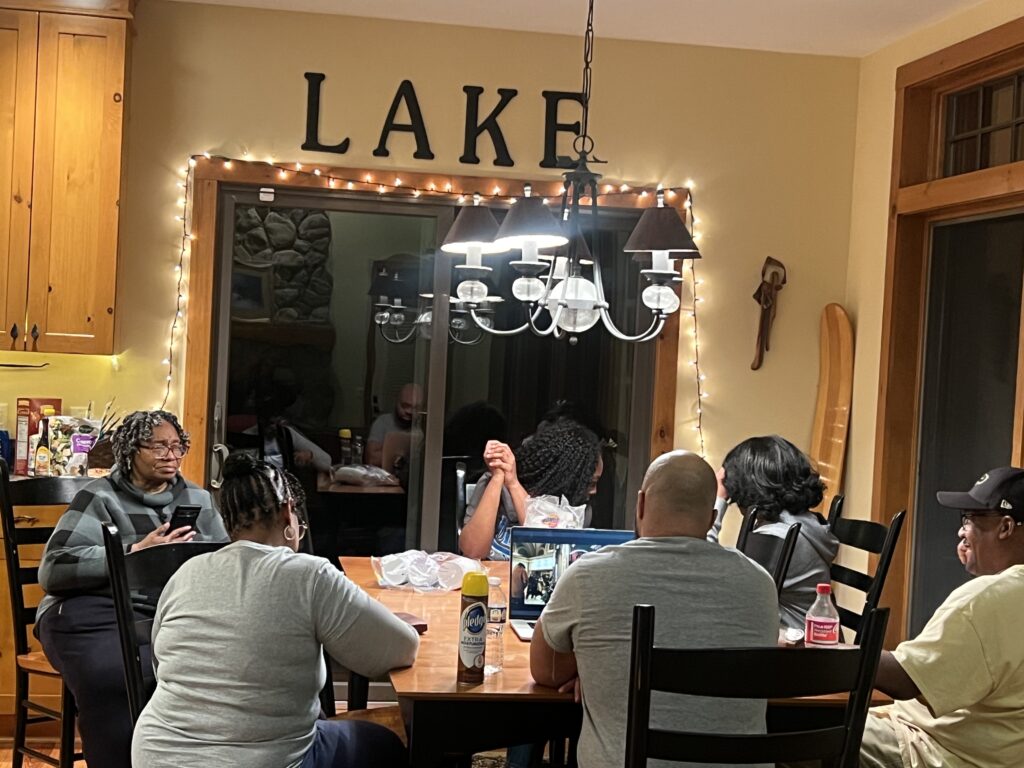
This may be the most important question you will ask yourself when determining your interior design aesthetic. Think about the ways you intend to use your space. First, you may ponder how you envision using your space, then you may consider the ways that you currently use your space. This will help you to determine the key functions of your home. When you know how you intend to use your home, you can think about how to design functionality into your home. Consider what interior design styles already have elements to support how you want to use your home.
What colors am I most drawn to?
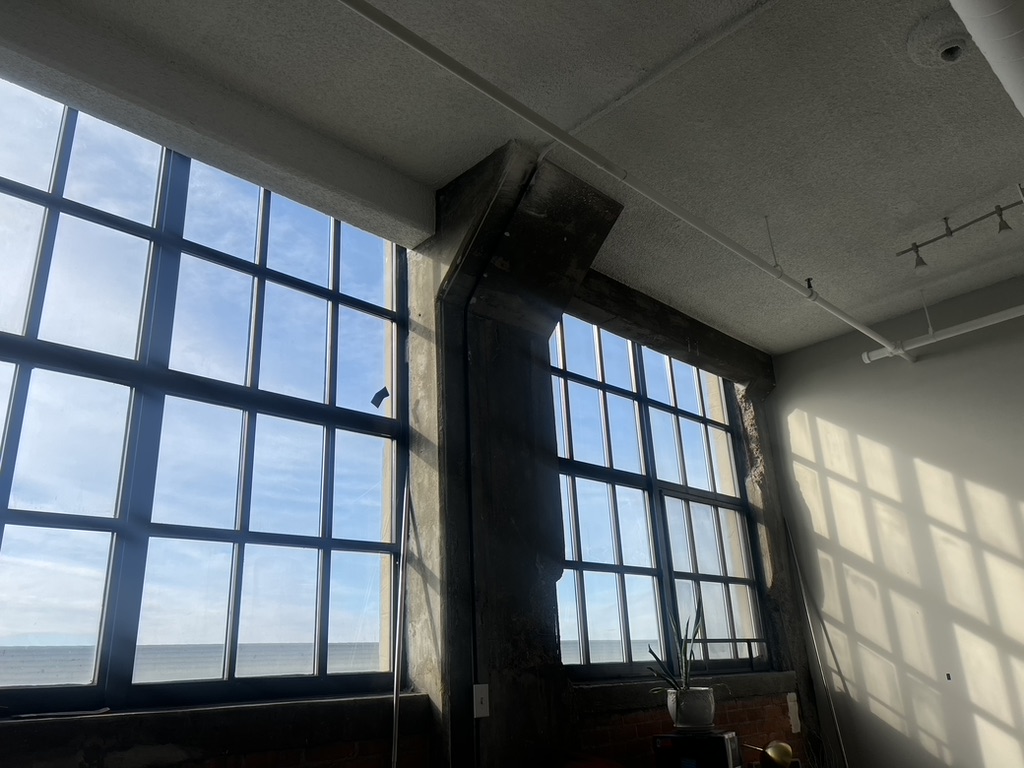
What are your favorite colors and color schemes? Identifying and naming the kinds of colors you feel most drawn to will provide incredible insight into the type of moods you enjoy, when you feel your best, and even how you define luxury. Some people like bold colors and patterns while others enjoy earth tones. You may find that some like muted colors and others prefer jewel tones. Understanding this is the springboard to finding your design aesthetic. I suggest trying the app Colours to review a variety of color palettes and identify the ones that stand out to you most or create your own color palette as a guide to keep with you as you begin designing your home’s interior.
What design style am I most drawn to?
Research interior design styles and take an interior design quiz. Check out this interior design quiz by Rebecca Robeson. It took some time to identify the actual names of the styles that I wanted to capture because there were so many that incorporated many of the elements that I was drawn to. However, none captured them all. I started attempting a rustic farmhouse theme with Victorian accents. This design theme captured the natural elements that I was looking for but lacked the sleek and contemporary feel I envisioned. As I continued my research I realized that industrial interior design and academia were more of what I was looking for. I was able to find this language by recognizing that I wasn’t completely satisfied with the original styles I explored. Continuing my research allowed me to identify other styles that are more closely aligned with my vision.
What do I value?
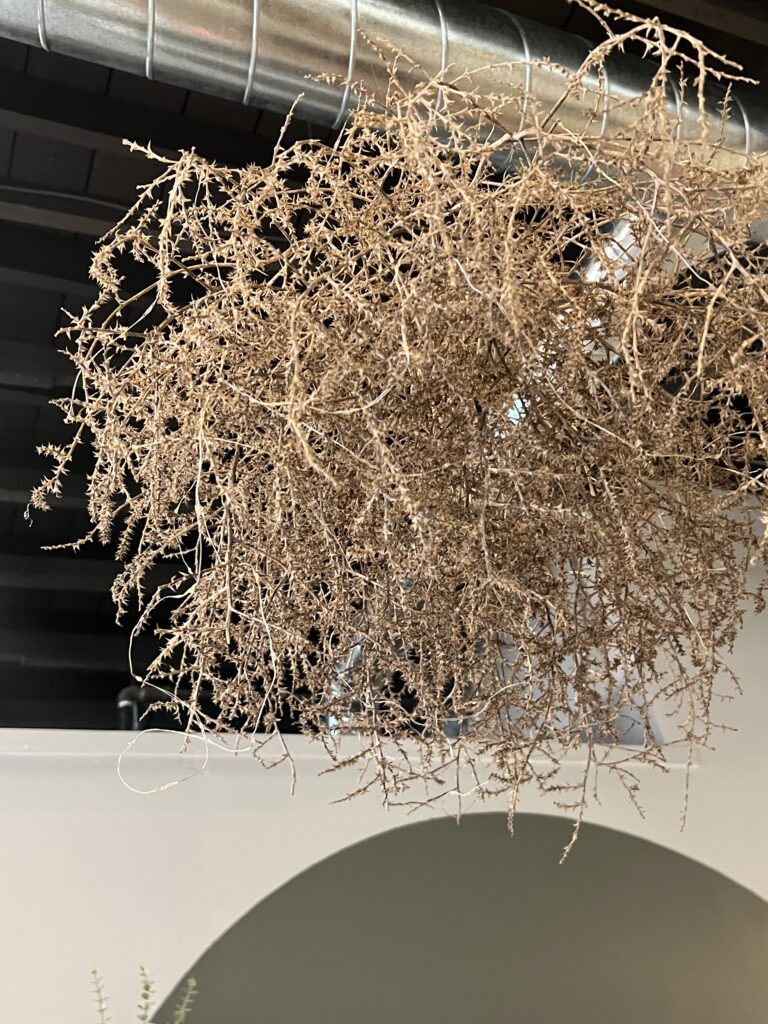
Sustainability, style, and functionality are key components of my approach. I do not want to compromise doing what is good for the environment, what works best for me, or what looks good to me. Ensuring the harmony of these elements is a priority. Think about the design styles that most naturally capture your values. Things like simplicity, tranquility, and self-expression are some values that I have heard often. For example, a huge component of industrial design is the display of raw materials. This allows me to be creative with recycled wood and metals for my design pieces fostering a sense of sustainability.
Antique and/or Contemporary?
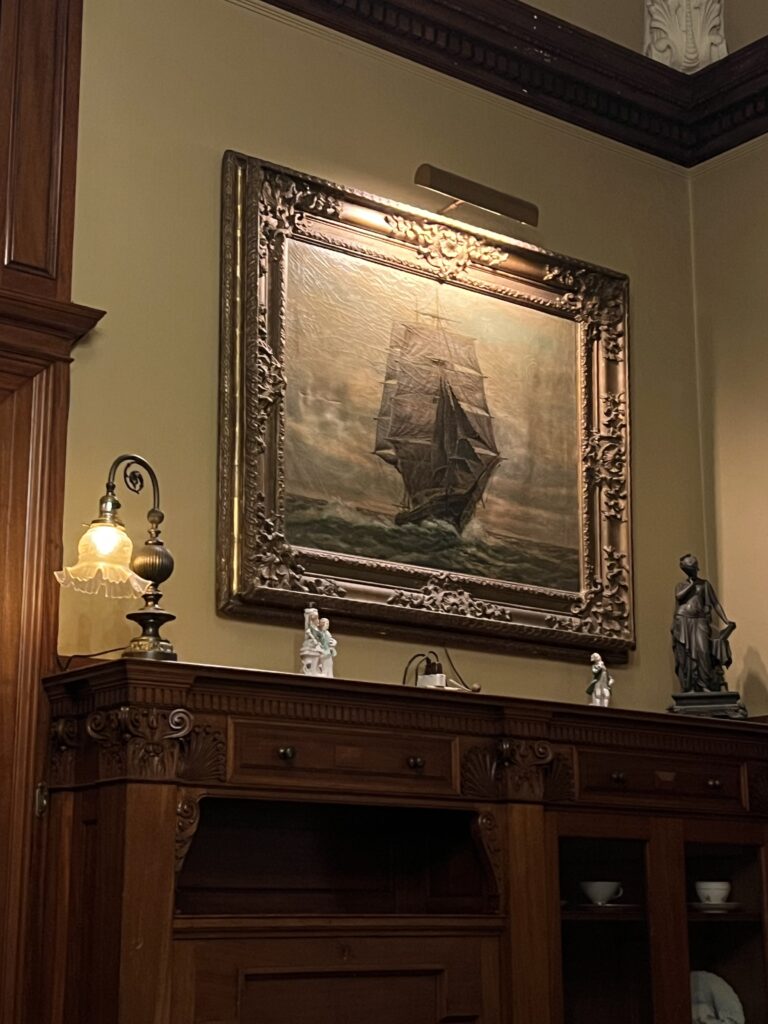
Consider if you prefer older styles, more contemporary designs, or a mixture of both. Also, think about what in your home you prefer to look contemporary vs old. For example, I love crown molding, which is typically found in older homes, while I also love modern face bowls and faucet fixtures. My friend and I have completely different visions for home aesthetics. He likes all contemporary design, I think it is too sterile and lacks character. He thinks my love for antique pieces demonstrates a lack of progression or freshness. What do you prefer, and the best part is, you don’t have to choose!
Dark or light?
Another great question to ask yourself is, do I like dark, light, or both? This question can be applied to colors, lighting, textures, placement, mood, etc. Again, I like a mixture of both! While I love ample natural light, I prefer dark white walls, deep grays, black fixtures, and trimming. This has a lot of implications for my design aesthetic. How might your preference for light and/or dark influence how you will design your home?
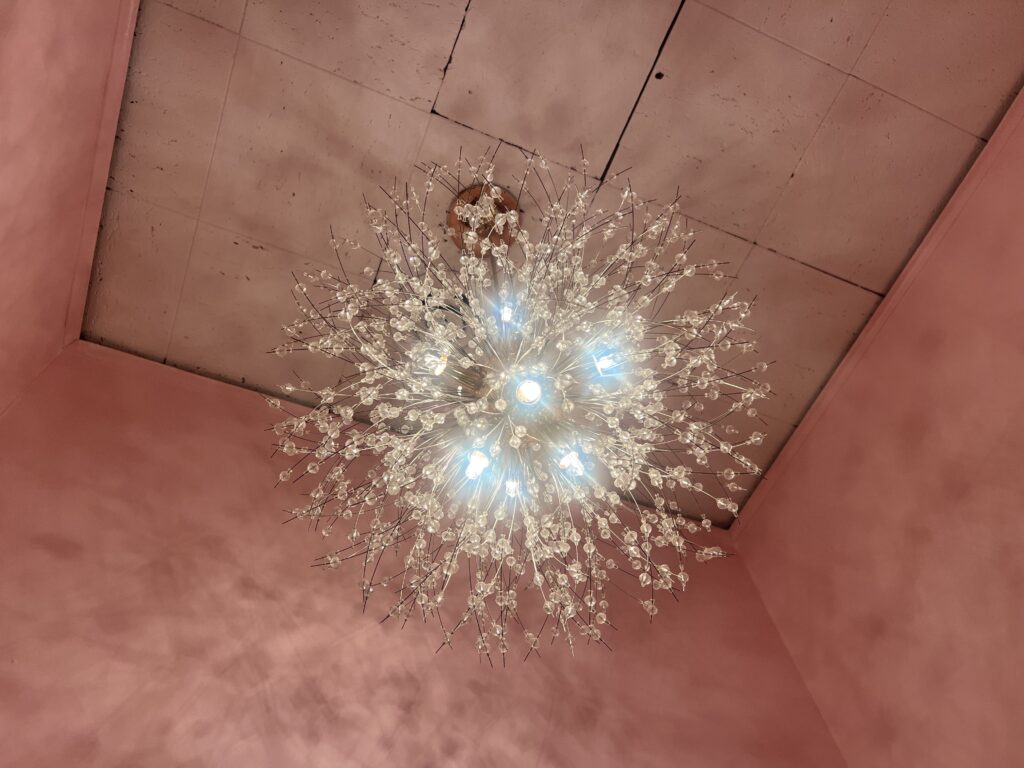
Glam or Understated?
My sister loves a glamorous look, I on the other hand do not. I have two beautiful jewel-toned, navy-blue couches that I love, that is all the color I can do. Do you like a glamorous style or something a bit more understated? Consider the colors you like and the material you want to display. Are you drawn to more outstanding imagery and elements like crystal or gold? How do they make you feel? Do you prefer muted colors and quiet luxury? Deciding on where you land, will help you to find an aesthetic or elements of an aesthetic that most resonates with you.
Is there something missing? Or are you sold with your design style?
After you’ve landed on your design aesthetic, color schemes, and mood, think about if you are sold. Is there something missing that is not fully captured? Considering this could lead you to push deeper into research to discover a more encompassing aesthetic. Understand that your unique spin may not ever be fully captured by any description. Give yourself permission to continue to grow and adjust as you go through this process. However, I am not advocating for you to stay in indecision, but listening to your intuition can help you find a scheme that is more aligned to your vision.
What words would you use to express your interior design style?
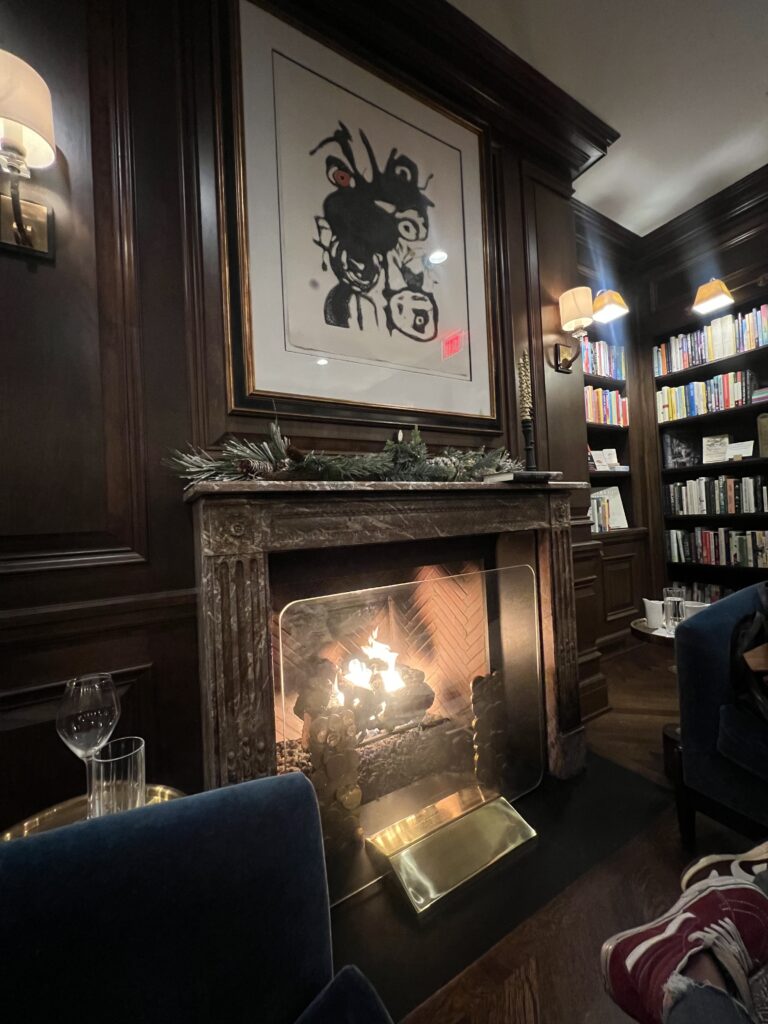
Take some time to list out all the words you would use to describe the design aesthetic you want for your home. Use these words as a springboard to guide your research. Remember, you are not married to these words. If through experimentation, you discover that the mid-century design no longer describes what your vision is, remove it from your list or replace it with a word or style that better suits what you are attempting to express. Naming and listing the words you want to realize aesthetically takes your vision out of your mind, and codifies it in a way that provides a tangible reference and guide to use and recall when making design decisions. That way your concepts no longer linger as allusive but are concrete and managable.
What patterns and shapes are you most drawn to?
Identifying the patterns and shapes that you are drawn to will also help you to identify a style of interior design. Explore if you prefer straight lines or curves. Think about if you like rounded shapes or pronounced corners. These elements also establish a mood that impacts your scheme.

What materials are you most drawn to?
This question will also help you discover the design aesthetic that suits your style. Think about if you have a preference for raw materials like brick, steel, and concrete. Have you considered softer materials like silk, wicker, cotton, wood, precious metals, stone, etc. Understanding the types of materials that you want in your home will give you an idea of what aesthetic to go for.
Where have you seen this style before?
Beyond your research of movies, think of places like restaurants, hotels, office buildings, and other people’s houses that you have been inspired by. It may be worthwhile to revisit those places and take note of the elements you see, the mood you feel, and what you like and dislike about the design. You may even want to ask the owner or designer what inspired them to make certain choices. This is a great way to begin visualizing how your aesthetic can come to life in your space.
What things do you like and dislike about my current design and decorations?
Grab a notebook and take a walk around your home. Take note of all the design elements that you like and dislike. Review the features of the house, the furniture, lighting, and other elements. What do you love, what do you want to spruce up, what would you like to do away with, and what would you like to add? If possible start to do away with the things that are not what you want, this is a great way to take a meaningful step to move you closer to your dream aesthetic.
9 Insanely Amazing Tips on How to Design on a Budget
Do you need to know how to design on a budget? Well, look no further…
21 Things to Consider Before you Buy your Loft
What are the most essential questions to ask yourself before buying a loft? Have you…
19 Questions to Ask Yourself to Find Your Design Aesthetic
Do you know the 19 most essential questions to ask to find your design aesthetic?…

